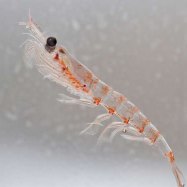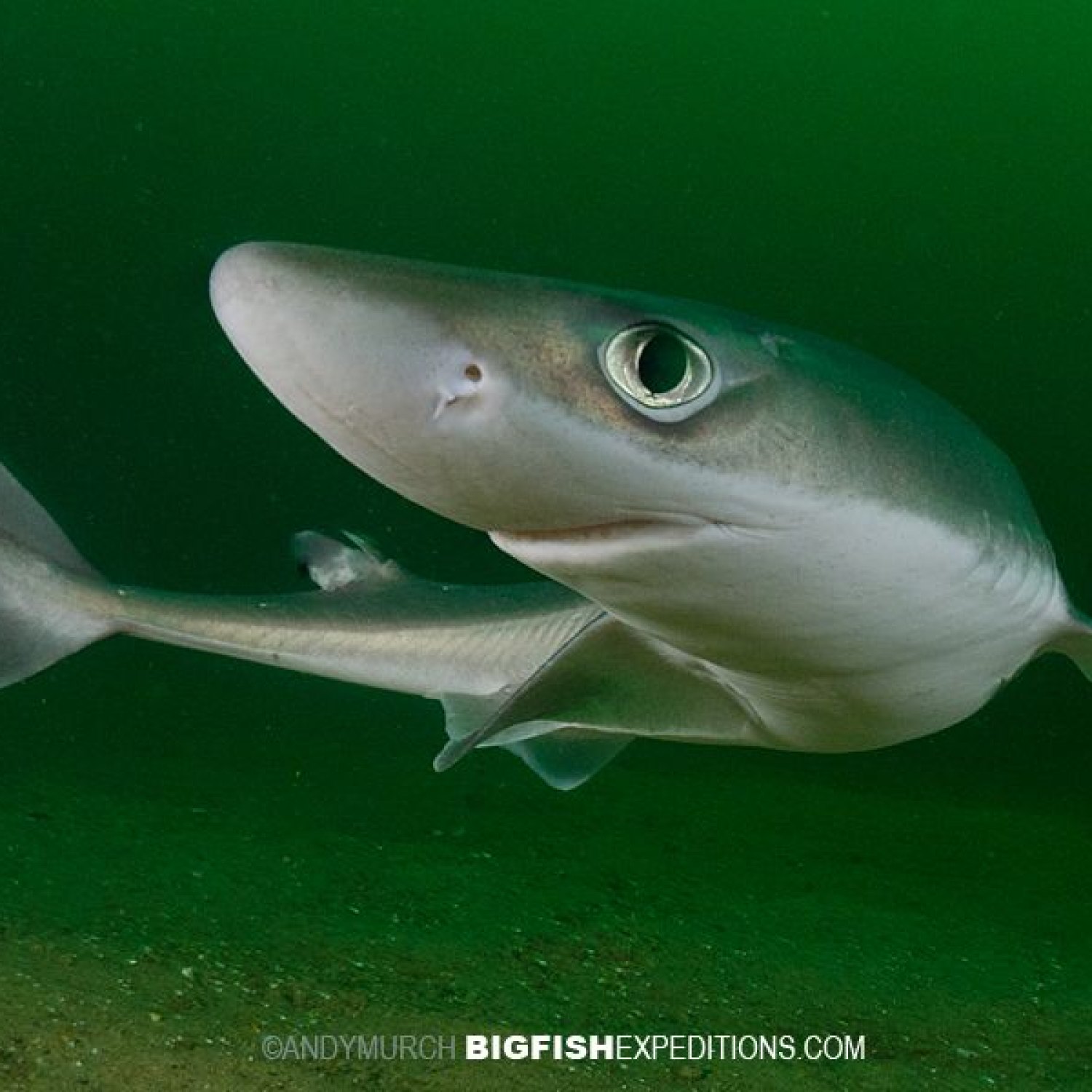
Spiny Dogfish
1.2 to 1.5 meters
Meet the spiny dogfish, a species of shark found in coastal areas. These fierce predators can grow up to 1.5 meters long and have a distinct elongated and slender body shape. Belonging to the Squalidae family, they are commonly known as spurdogs or piked dogfish. Keep your eyes open while swimming in the ocean, you never know when you might spot one! #spinydogfish #coastalsharks #marinepredators
Animal Details Summary:
Common Name: Spiny Dogfish
Kingdom: Animalia
Habitat: Marine
The Spiny Dogfish – A Small but Mighty Ocean Predator
In the vast and mysterious depths of the ocean, among all the different species of marine life, there is one particular creature that stands out for its unique characteristics and fierce nature – the Spiny Dogfish. Despite its small size, this predator has captured the attention of marine biologists and fishermen alike, making it a fascinating subject for scientific research. In this article, we will explore the interesting features of the Spiny Dogfish, from its scientific classification to its habitat, feeding habits, and more.Scientific Classification
The Spiny Dogfish, also known as Squalus acanthias, belongs to the Animalia kingdom and Chordata phylum Spiny Dogfish. It is a type of fish, specifically classified as a Chondrichthyes – a subclass of Jawed Fish that are characterized by their cartilaginous skeletons. This subclass also includes sharks, rays, and chimaeras. The Spiny Dogfish belongs to the order Squaliformes and the family Squalidae, which refers to the dogfish sharks. These sharks are known for their narrow and cylindrical shape, making them excellent swimmers.Appearance and Physical Characteristics
The Spiny Dogfish is a small and slender fish that typically measures around 1.2 to 1.5 meters in length. This may not seem like much compared to other sharks, but their compact and streamlined body makes them fast and agile predators. They have an elongated snout, pointed fins, and a long caudal fin, which helps them propel through the water with ease Saarloos Wolfdog. As their name suggests, they are covered in sharp thorns or spines which serve as a defense mechanism against potential predators. These spines are also what gives them their distinctive appearance.Habitat and Geographical Distribution
The Spiny Dogfish is found in the Atlantic and Pacific Oceans, primarily along the coastlines of North America, Europe, and Asia. They are highly adaptable to different water temperatures and can be found in both shallow and deep waters up to a depth of 750 meters. They tend to reside in rocky and sandy areas, and they are commonly found in coastal regions, making them easily accessible to fishermen.Feeding Habits
The Spiny Dogfish is a carnivore, which means that it feeds on other animals. As a predator, it is at the top of the food chain in its ecosystem and plays a vital role in balancing the marine food web. They have a varied diet consisting of smaller fish, cephalopods, crustaceans, and even other dogfish sharks. Their sharp teeth and powerful jaws allow them to efficiently capture and kill their prey. They are also known for their high metabolism, requiring them to eat frequently to sustain their energy levels.Reproduction and Life Cycle
Like most sharks, the Spiny Dogfish is oviparous, meaning they lay eggs instead of giving birth to live young. The female dogfish can lay up to six large egg cases at a time, which they attach to seaweed or other objects on the seabed. The eggs take around 24 months to hatch, with the baby dogfish emerging fully developed and ready to hunt for prey. They can live up to 30 years in the wild.Threats and Conservation Status
Unfortunately, the Spiny Dogfish population has declined significantly in recent years due to overfishing. They are a commercially valuable fish, with their meat often used for fish and chips and their fins used for shark fin soup. Additionally, they are also caught unintentionally as bycatch in other fisheries. This has led to several organizations advocating for their conservation and management to prevent their population from declining even further.Unique Adaptations
Aside from their spiny skin, the Spiny Dogfish has several other unique adaptations that allow them to thrive in their environment. One of the most interesting is their ability to control their buoyancy. Unlike most sharks, they have a gland called the Epigonal Organ, which produces an oil that helps them maintain their position in the water. This allows them to hover effortlessly and conserve their energy while waiting for prey.Additionally, the Spiny Dogfish also has a unique sense organ called the Ampullae of Lorenzini, which allows them to detect electric currents in the water. This is especially useful for hunting as they can detect the electric signals produced by their prey.
A Predator Worth Protecting
Despite their small size, the Spiny Dogfish plays a crucial role in maintaining the balance of the marine ecosystem. Their efficient hunting skills and unique adaptations make them formidable predators, and their decline in population is a cause for concern. It is essential to protect and manage their population to ensure their survival and the health of our oceans.Fascinating Facts
- The Spiny Dogfish is the most abundant shark in the world, with an estimated population of over 100 million.- Their name comes from the sharp spines that cover their body, which can be dangerous if not handled carefully.
- They are relatively slow swimmers, with a maximum speed of only 1.1 meters per second.
- The Spiny Dogfish played a significant role in World War II as they were used to make vitamin A supplements.
- They have a unique reproductive strategy called "sperm storage," where females can store sperm from multiple males and use it to fertilize future egg clutches.
In conclusion, the Spiny Dogfish may seem like a small and unassuming fish, but it is a powerful predator with several unique features and adaptations that make it a fascinating subject for scientific study. Its population may be declining, but with proper management and conservation efforts, we can ensure its survival for future generations to appreciate and admire. Let us continue to learn more about this remarkable ocean creature and work towards preserving its place in the marine ecosystem.

Spiny Dogfish
Animal Details Spiny Dogfish - Scientific Name: Squalus acanthias
- Category: Animals S
- Scientific Name: Squalus acanthias
- Common Name: Spiny Dogfish
- Kingdom: Animalia
- Phylum: Chordata
- Class: Chondrichthyes
- Order: Squaliformes
- Family: Squalidae
- Habitat: Marine
- Feeding Method: Carnivore
- Geographical Distribution: Atlantic and Pacific Oceans
- Country of Origin: United States
- Location: Coastal areas
- Animal Coloration: Grey or brown
- Body Shape: Elongated and slender
- Length: 1.2 to 1.5 meters
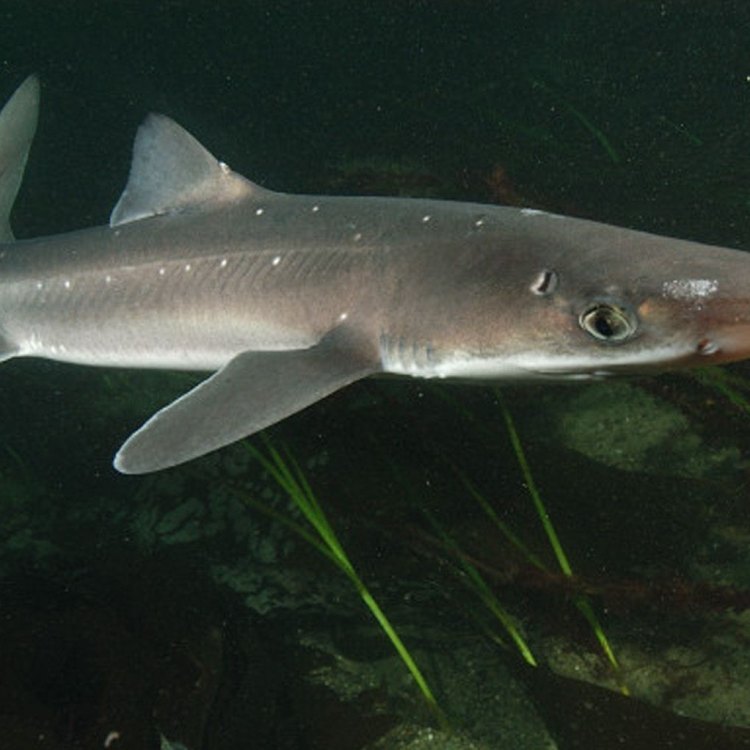
Spiny Dogfish
- Adult Size: Up to 1.5 meters
- Average Lifespan: 20 to 100 years
- Reproduction: Ovoviviparous
- Reproductive Behavior: Internal fertilization
- Sound or Call: No vocalization
- Migration Pattern: Migratory
- Social Groups: Solitary
- Behavior: Nocturnal feeder
- Threats: Overfishing, habitat degradation
- Conservation Status: Vulnerable
- Impact on Ecosystem: Keystone species, maintains balance in food web
- Human Use: Commercial fishing, aquarium trade
- Distinctive Features: Spines on dorsal fins
- Interesting Facts: Most abundant shark species in the world
- Predator: Larger sharks, dolphins
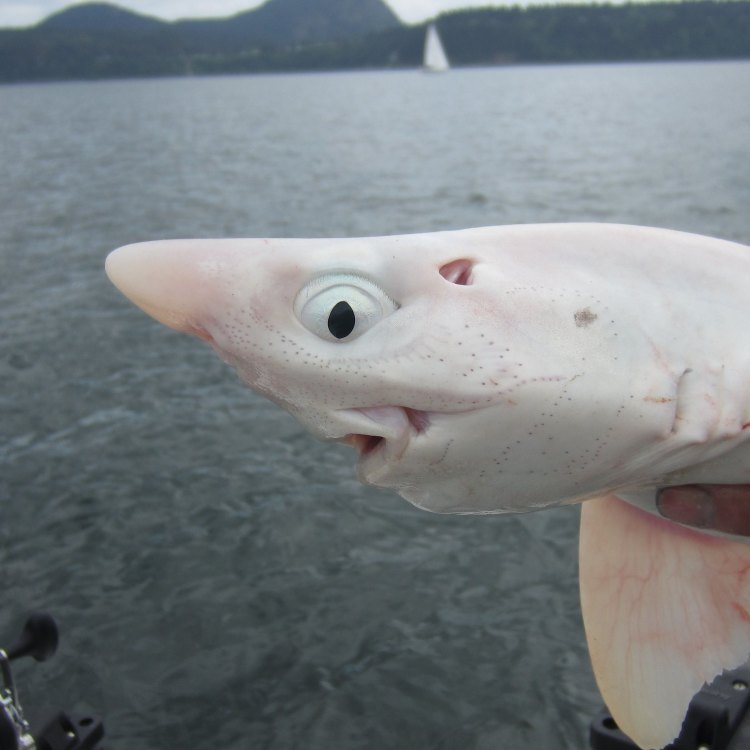
Squalus acanthias
The Intriguing World of the Spiny Dogfish: A Fascinating Look at the Most Abundant Shark Species in the World
In the vast and mysterious depths of the ocean, there lives a creature that has captured the fascination of marine biologists, fishermen, and curious minds alike - the Spiny Dogfish. This small but mighty shark is a species that is both unique and important in its role within the underwater ecosystem. With its distinctive features and interesting behaviors, the Spiny Dogfish is truly a fascinating creature worth learning about.Let's dive in and explore the intriguing world of the Spiny Dogfish, and discover what makes this species a vital part of our oceans PeaceOfAnimals.Com.
The Basics: Adult Size, Lifespan, and Reproduction
The Spiny Dogfish, also known as Squalus acanthias, is a species of small-sized shark that can grow up to 1.5 meters in length. They are known to live for an average of 20 to 100 years, making them one of the longest-living sharks in the world. However, their lifespan can vary depending on factors such as habitat, food availability, and human impact.One interesting fact about Spiny Dogfish is their unique reproductive behavior. They are ovoviviparous, which means that the eggs develop inside the female's body until they hatch, and the pups are then born alive. This method of reproduction is different from most shark species, where the eggs are laid and then hatch outside of the female's body. This unique reproductive behavior allows the Spiny Dogfish to give birth to a higher number of offspring, increasing their chances of survival.
Reproductive Behavior: Internal Fertilization
Another interesting aspect of the Spiny Dogfish's reproductive behavior is that they practice internal fertilization Scimitar Horned Oryx. Male sharks have specialized organs called claspers, which they use to transfer sperm to the female's reproductive organs. This method of fertilization allows for more successful reproduction, as the eggs are fertilized inside the female's body, increasing the chances of survival for the pups.Note: The
#0d0d0d background color is used on this website, so any white/gray text will be invisible. Try inspecting this page if that stops #0d0d0dThis is also a complex function that solely returns a Func<Func<int>, int>> to be in terms of language-text.
Sound or Call: No Vocalization
Unlike other shark species, the Spiny Dogfish does not produce any vocalizations or calls. This means that they do not communicate with each other through sounds. Instead, they rely on other senses, such as smell and electroreception, to navigate and interact with their surroundings. This lack of vocalization also means that they are not a disturbance to other marine animals, making them an essential part of the underwater acoustic ecosystem.Migration Pattern and Behavior
The Spiny Dogfish is a migratory species, meaning they travel long distances depending on the season and food availability. They can be found in the North Atlantic and Pacific Oceans, with a larger population in colder waters. During the winter, they travel towards the equator, while in the summer, they move towards the poles.One of the most intriguing behaviors of the Spiny Dogfish is their nocturnal feeding. They are known to be solitary creatures, preferring to hunt at night and rest during the day. This behavior allows them to avoid larger predators during the day and take advantage of the cover of darkness to catch their prey.
Threats to the Spiny Dogfish: Overfishing and Habitat Degradation
Unfortunately, the Spiny Dogfish is facing significant threats to its survival, primarily due to human activities. Overfishing is one of the biggest threats, as this species is heavily sought after for its meat and liver oil. In some areas, they are also targeted for their fins, which are used in traditional Asian cuisine.Additionally, habitat degradation also poses a threat to the Spiny Dogfish. As they prefer colder waters, the rise in ocean temperatures due to global warming can affect their survival and reproductive success. Pollution, especially from plastic, can also harm these creatures, as they mistake it for food or get entangled in it.
Conservation Status and Impact on Ecosystem
Due to these threats, the Spiny Dogfish is currently listed as "vulnerable" on the IUCN Red List of Threatened Species. This status means they are facing a high risk of extinction in the wild. However, despite their vulnerability, the Spiny Dogfish plays a crucial role in the ecosystem as a keystone species.As solitary predators, they play a significant role in controlling the population of their prey, such as squid and herring. This helps to maintain balance in the food web, preventing certain species from becoming too dominant. Their role as a keystone species also ensures the survival of other marine animals that rely on these prey species for survival.
Human Use: Commercial Fishing and Aquarium Trade
The Spiny Dogfish is a commercially important species worldwide, with the biggest market being in Europe and North America. They are often caught for human consumption in the form of fish and chips, and their liver oil is also used for medicinal purposes. In some areas, they are also used for bait in lobster and crab fishing.Furthermore, Spiny Dogfish are also popular in the aquarium trade due to their interesting features and behavior. This has led to a significant decline in their wild populations as they are often caught and sold for this purpose. However, the use of sustainable fishing practices and stricter regulations can help reduce the impact on their populations.
Distinctive Features and Interesting Facts
The Spiny Dogfish has several distinctive features, with its namesake being the most notable. They have sharp spines on their dorsal fins, which they use for defense against predators. These spines are also known to have medicinal properties and have been used in traditional medicine.Another interesting fact about the Spiny Dogfish is that it is the most abundant shark species in the world. Their adaptable nature, high reproductive rates, and ability to thrive in various environments have contributed to their abundance. However, this does not mean they are not facing threats, and it is crucial to continue efforts towards their conservation.
Predators and Coexistence in the Ocean
Despite their abundance, the Spiny Dogfish has its own set of predators in the ocean. Larger sharks, such as the Great White and the Shortfin Mako, are known to prey on the Spiny Dogfish. Additionally, dolphins have also been observed preying on these small sharks.However, the Spiny Dogfish also coexists with other animals in the ocean, playing its role in maintaining balance within the ecosystem. They have been observed forming symbiotic relationships with certain species of fish, allowing both parties to benefit from the partnership.
Final Thoughts
The Spiny Dogfish is a fascinating and important species that has captured the attention of researchers and ocean enthusiasts around the world. From their unique reproductive behavior to their role as a keystone species, this abundant shark holds an important place in our oceans.It is crucial to continue efforts towards their conservation and find sustainable ways to coexist with these creatures. By understanding and appreciating the Spiny Dogfish and its role in the ecosystem, we can help ensure their survival for generations to come.
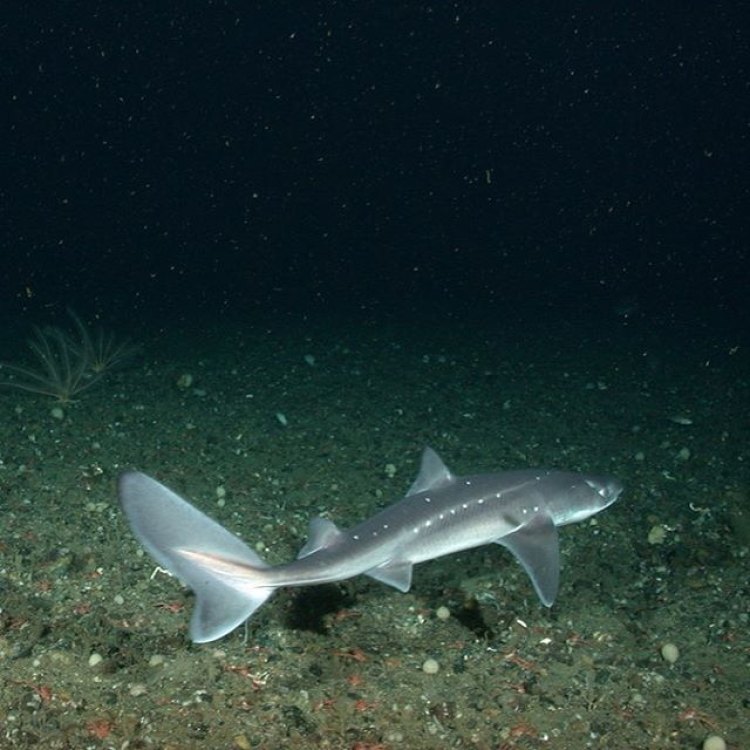
The Spiny Dogfish – A Small but Mighty Ocean Predator
Disclaimer: The content provided is for informational purposes only. We cannot guarantee the accuracy of the information on this page 100%. All information provided here may change without prior notice.

